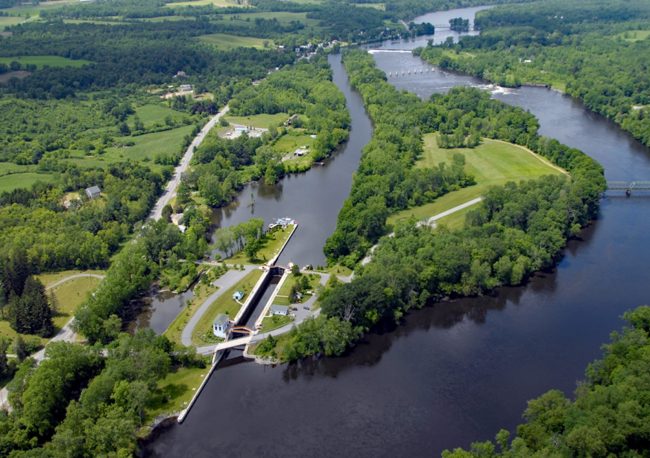Why I Sweep: For yesterday, today and tomorrow
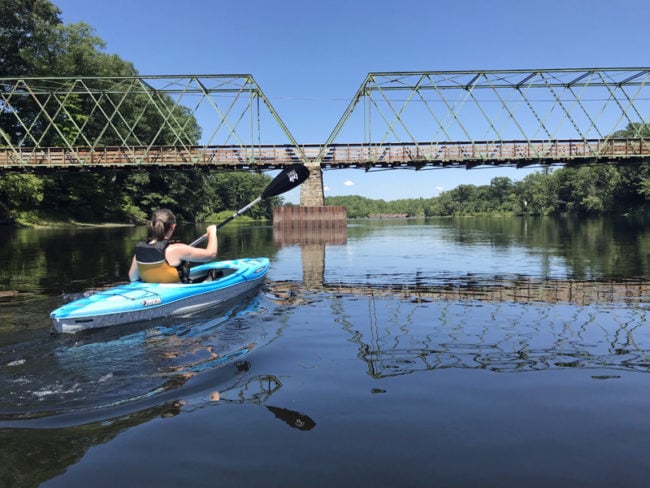
View more images on our Flickr site
This is one in a series of guest blog posts about Riverkeeper Sweep, our annual day of service for the Hudson, involving more than 120 cleanups and planting projects on a single day. Be part of the next Sweep, May 1, 2021 – Visit Riverkeeper.org/sweep.
I stand by the river and I know that it has been here yesterday and will be here tomorrow and that therefore, since I am part of its pattern today, I also belong to all its yesterdays and will be a part of all its tomorrows. This is a kind of earthly immortality, a kinship with rivers and hills and rocks, with all things and all creatures that have ever lived or ever will live or have their being on the earth. It is my assurance of an orderly continuity in the great design of the universe.
— Virginia Eifert
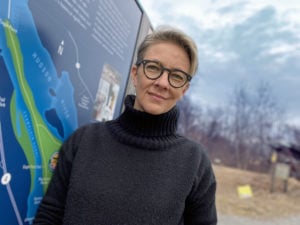 The Hudson River has a lot of stories to tell, and while I may be biased, our particular stretch seems a bit more talkative than many.
The Hudson River has a lot of stories to tell, and while I may be biased, our particular stretch seems a bit more talkative than many.
As the Director of Hudson Crossing Park, located just outside of Schuylerville, I like many others, have come to see the Hudson as “my” river. I dare say this sentiment is not a new one. In fact, it’s one that can be traced back even further than most would ever expect.
Hudson Crossing history
Schuylerville was originally known as Saratoga, not to be confused with our mineral spring and horse racing neighbors in Saratoga Springs. Perhaps those who are a bit more historically minded hear “Saratoga” and think of the infamous turning point of the Revolutionary War and how it helped shape our national history. Some of the preliminary battles of Saratoga took place on the same ground that Hudson Crossing Park exists on now, including one of the crossings that gave Hudson Crossing its name.
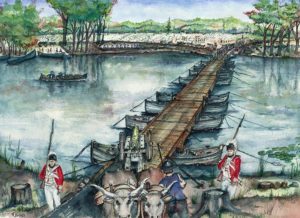 In 1777, British General John Burgoyne and more than 6,000 of his troops, camp followers, and accompanying munitions crossed the Hudson via a “Bridge of Boats,” bateaux that were anchored and lashed together with planks laid across. They crossed the relatively calm waters at that point on the Hudson and marched to England’s historic defeat at Saratoga Battlefield.
In 1777, British General John Burgoyne and more than 6,000 of his troops, camp followers, and accompanying munitions crossed the Hudson via a “Bridge of Boats,” bateaux that were anchored and lashed together with planks laid across. They crossed the relatively calm waters at that point on the Hudson and marched to England’s historic defeat at Saratoga Battlefield.
The Hudson River was – and is – more than a waterway to cross for those who have lived along its banks in Washington and Saratoga Counties. The name “Saratoga” itself tells the story of just how deeply connected those who live here have always been to the river’s waters — the word “Saratoga” is an adaptation of the Mohican “se-rach-ta-gue,” or “hillside country of the quiet river.” The river provided a rich life to those who originally inhabited this land, and remnants of fire pits used by the native peoples who called the shores of the river home have been found in the area that date back to over 1,500 years ago.
The river, lifeblood of the region
The Hudson’s more recent history includes the struggle with ongoing pollution and dredging. Recognizing the horrible impact that PCBs and other pollutants have had on the river and wildlife, the Hudson’s surrounding contemporary communities have been forced to reevaluate their relationship with the river. What was once seen as a corridor of commerce and disposable resource for industry has now been recognized for what it is — the lifeblood of an entire region.
The story of Hudson Crossing Park is, in so many ways, a reflection of the story of the river itself. Neglected state land on an island created by the Champlain Canal and Hudson proper, our 42-acre island had become a dumping ground until a group of like-minded people joined together, and seeing what could be, rolled up their sleeves and got to work. Literally tons of waste were removed from the land, a pavilion was built, and overlooks and trails were created.
The historic Dix Bridge, which still spans the Hudson just downriver from the site of General Burgoyne’s crossing, was saved from demolition, and a park was born. Years of working together and moving forward bit by bit led others to join the effort and community members from all over started to call HCP their park. In 2020, Hudson Crossing Park welcomed more than 30,000 visitors of all ages, abilities, and backgrounds. HCP offers programming and events throughout the year, including Winterfest in February to the annual Cardboard Boat Races in – you guessed it – the waters of the Hudson River in August.
Plenty of people called the idea of creating a park out of nothing an insurmountable task, but that didn’t stop the park’s founders. Truth be told, the challenge probably motivated them as much as the vision they had in their heads. The same can be said for the cleanup of the Hudson’s waters. Plenty have said that the damage has been done, it is hopeless, and that given enough time “Maybe Mother Nature will take care of the pollution on its own.” And yet, thanks to the tireless efforts of organizations like Riverkeeper and countless volunteers, the Hudson River has transitioned from insurmountable task to an incredible asset to all those who live and work along its banks.
Seeing a source of endless possibility
Younger generations – school children who visit Hudson Crossing on field trips, scout troops who volunteer as part of their civil service – experience the park and the river differently than I do. They play in Hudson Crossing’s Play Garden and splash along the river’s banks and can’t believe it when I tell them what it once was. They can’t envision a park full of garbage or a river so unhealthy no one waded in it, but it’s a story I tell early and tell often. The fight, after all, is not over, and I’m reminded of how much work is left to be done each year during Riverkeeper Sweep.
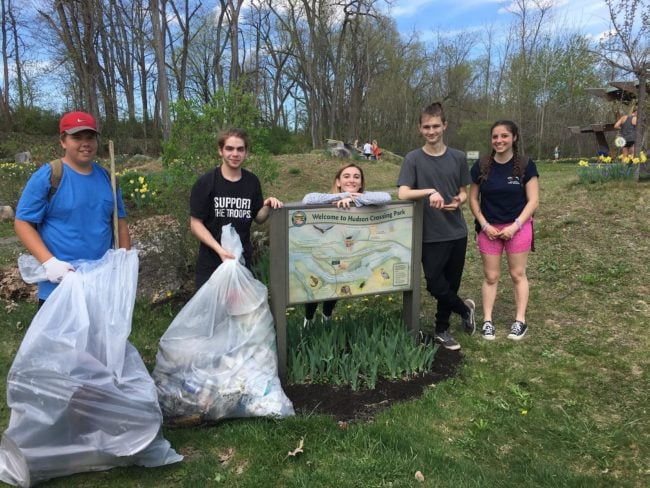
The bags of garbage removed from the river number far less than they once did, but they’re still there, and they remind us all what can happen if we let our attention slip. So, we sweep, and we tell our children the stories of the river and how to do their part in ensuring its health for generations to come. They see the Hudson as a source of endless possibility, and we work hard to teach them that someday the responsibility of caring for the river will fall on their shoulders.
This is why I sweep: I sweep to honor the many stories that the Hudson has to tell, from those that lived here long before Henry Hudson began his journey up our waterway to the stories of future generations that have not yet been told.
Kate Morse is Director of Hudson Crossing Park. Learn about the Riverkeeper Sweep Lock 5 Island cleanup happening May 1, 2021, at Hudson Crossing Park.

